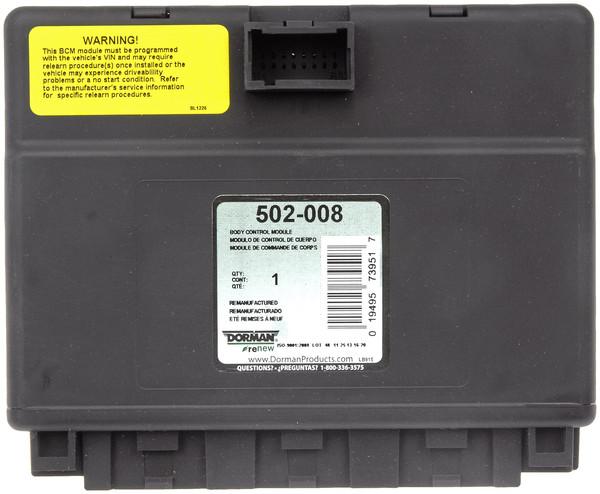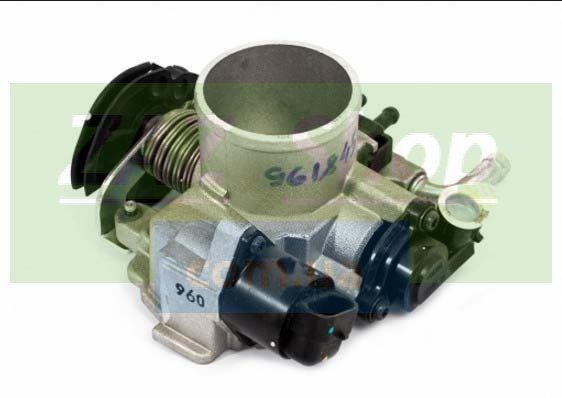
P023E MAP - B Turbo/SC Boost sensor correlation
Content
- P023E MAP - B Turbo/SC Boost sensor correlation
- OBD-II DTC Datasheet
- What does this mean?
- What is the severity of this DTC?
- What are some of the symptoms of the code?
- What are some of the common causes for the code?
- What are some of the P023E troubleshooting steps?
- Related DTC discussions
- Need more help with your P023E code?
P023E MAP - B Turbo/SC Boost sensor correlation
OBD-II DTC Datasheet
Manifold Absolute Pressure - Turbocharger/Supercharger B Sensor Ratio
What does this mean?
This is a generic powertrain diagnostic trouble code (DTC) and is commonly applied to OBD-II vehicles. This may include, but is not limited to, vehicles from Land Rover (Range Rover, Discovery), Ford, Chevrolet, Mazda, Dodge, Peugeot, Saab, Toyota, etc.
Although general, the exact repair steps may vary depending on the model year, make, model, and transmission configuration.
If your OBD-II equipped vehicle has stored the P023E code, it means that the powertrain control module (PCM) has detected a mismatch in the correlated signals between the manifold absolute pressure (MAP) sensor and the turbocharger / supercharger boost sensor, which was marked "B" ...
The letter “B” denotes a specific boost sensor in the system that may use multiple boost sensors in different locations. Consult a reliable vehicle information source to determine exactly which sensor B is referring to (for the vehicle in question). This code only applies to vehicles that are equipped with positive air supply devices. Forced air devices include turbochargers and blowers.
The MAP sensor supplies the PCM with a voltage signal that reflects the density or pressure of the intake manifold air. The voltage signal is received (PCM) in units of kilopascals (kPa) or inches of mercury (Hg). In some vehicles, barometric pressure is replaced by barometric pressure, which is measured in similar increments.
The turbocharger / supercharger boost pressure sensor (labeled B) is likely to be of a similar design to the MAP sensor. It monitors the air density (boost pressure) inside the intake pipe of the turbocharger / supercharger and provides the PCM with a corresponding voltage signal.
A P023E code will be stored and the Malfunction Indicator Lamp (MIL) may illuminate if the PCM detects voltage signals between the MAP sensor and turbocharger / supercharger sensor B that differ by more than the programmed degree. MIL may require multiple ignition cycles (with failure) to illuminate.
What is the severity of this DTC?
Overall engine performance and fuel economy can be adversely affected by conditions that contribute to the P023E code. It should be classified as heavy.
What are some of the symptoms of the code?
Symptoms of a P023E DTC may include:
- Reduced engine power
- Excessively rich or lean exhaust
- Delay in starting the engine (especially cold)
- Reduced fuel efficiency
What are some of the common causes for the code?
Causes of this P023E DTC may include:
- Defective MAP / Turbocharger / Boost sensor B
- Open or short circuit in the wiring or connector of the MAP sensor / turbocharger / supercharger B
- Engine failure (insufficient vacuum production)
- Limited intercooler
- PCM or PCM programming error
What are some of the P023E troubleshooting steps?
Before attempting to diagnose the P023E code, I would first gain access to a diagnostic scanner, a digital volt / ohmmeter (DVOM), a handheld vacuum gauge, and a reliable source of vehicle information. Diagnosing any code associated with the MAP sensor should include verifying that the engine is creating sufficient vacuum. This can be done using a vacuum gauge.
A visual inspection of all MAP / turbocharger / supercharger sensor wiring and connectors is OK as long as there are no obstructions in the intercooler and the air filter is relatively clean. Repair if necessary. Then I connected the scanner to the car diagnostic port and got all stored codes and freeze frame data. Freeze frame data can best be described as a snapshot of the exact circumstances that occurred during the fault that led to the stored P023E code. I like to write this information down because it can be helpful in diagnostics. Now clear the codes and test drive the vehicle to make sure the code is cleared.
If this:
- Check individual MAP / turbocharger / supercharger boost pressure sensors using the DVOM and your vehicle information source.
- Place the DVOM on the Ohm setting and test the sensors while they are unplugged.
- Consult your vehicle information source for component testing specifications.
- MAP / turbocharger / boost sensors that do not meet manufacturer's specifications must be replaced.
If all sensors meet manufacturer's specifications:
- Check the reference voltage (typically 5V) and ground at the sensor connectors.
- Use the DVOM and connect the positive test lead to the reference voltage pin of the sensor connector and the negative test lead to the ground pin of the connector.
If you find the reference voltage and ground:
- Connect the sensor and check the sensor signal circuit with the engine running.
- Follow the temperature and voltage diagram found in the vehicle information source to determine if the corresponding sensors are working properly.
- Sensors that do not reflect the manufacturer's specified voltage level (according to manifold absolute pressure and turbocharger / supercharger boost pressure) must be replaced.
If the sensor signal circuit reflects the correct voltage level:
- Check the signal circuit (for the sensor in question) at the PCM connector. If there is a sensor signal at the sensor connector but not at the PCM connector, there is an open circuit between the two components.
- Test individual system circuits with DVOM. Disconnect the PCM (and all associated controllers) and follow the diagnostic flowchart or connector pinouts to test the resistance and / or continuity of an individual circuit.
If all MAP / turbocharger / supercharger boost pressure sensors and circuits are within specifications, suspect a PCM failure or PCM programming error.
- Review Technical Service Bulletins (TSBs) for assistance with diagnosis.
- The turbocharger / supercharger boost sensor often remains disabled after air filter changes and other related maintenance.
Related DTC discussions
- There are currently no related topics in our forums. Post a new topic on the forum now.
Need more help with your P023E code?
If you still need help with DTC P023E, post a question in the comments below this article.
NOTE. This information is provided for informational purposes only. It is not intended to be used as a repair recommendation and we are not responsible for any action you take on any vehicle. All information on this site is protected by copyright.
